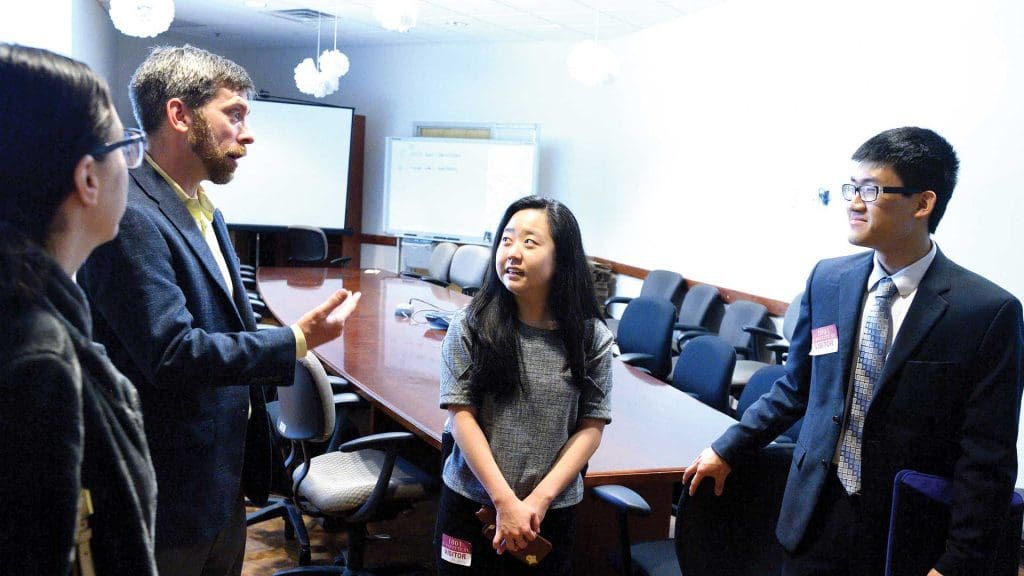
a presentation to Baltimore City Health Department officials
The Road From Research to Policy
The course title may be Introduction to Urban Studies, but that introduction doesn’t just happen by way of texts and lectures. It’s a personal one.
When Mindy Kim ’19 and Barry Huang ’18 signed up, they had no idea they’d soon be sitting across a conference table from real Baltimore City Health Department officials, presenting their own deeply researched recommendations to address Baltimore’s opioid epidemic.
“I realized that we, as students, actually can make an impact even while we’re students,” Huang said.
The course’s goal is twofold, says instructor Mike Reese, lecturer in the Department of Sociology. He wants students to apply social science research skills, and he wants them to get to know Baltimore, to engage with the city by tackling projects that support its people.
“It’s an equal partnership: Students don’t just make a contribution to the community, but the community partner acts as a co-instructor helping me teach students,” says Reese, who is also associate dean of University Libraries and director of the Center for Educational Resources. “Leveraging this mutually beneficial relationship is something I learned as a Center for Social Concern Faculty Fellow.” The program trains faculty in community-based learning best practices.
Each semester he teaches the course, Reese joins forces with a community partner—an organization interested in using social science research to make a difference in its area of expertise. Most recently, that partner was Johns Hopkins’ Centers for Civic Impact, which helps public organizations use data and research to better understand and improve public life.
The Centers for Civic Impact developed a tool for cities to plan and implement policy change, and wanted to pilot this “roadmap” to see how well it functioned in the real world, says Katherine Klosek, the group’s director of applied public research. She compiled case studies on a handful of issues that existing client cities were working on, including climate change and opioid overdose, and handed them over to the students. In groups of four, students conducted background research about their assigned city and how the issue played out there, learned about approaches that had already been tried and their outcomes, distilled the most relevant methods, and chose the most promising recommendations.
“I was impressed by how much thought and creative thinking went into these papers,” Klosek says.
Assignments are open-ended; students need to figure out what information to include, and how best to present the issues and their recommendations in both written and oral form.
“Students struggled with that open-endedness, but I feel authentic assignments prepare them for what they’re going to experience when they move outside the academy,” Reese says.
At that city health department conference table, Huang and Kim described their findings and presented their recommendations. The largest obstacle with opioid addiction, they found, was related to the stigma, so they recommended transforming vacant homes into neighborhood treatment or emergency response centers.
“The good news is that you hit on a lot of things that are in discussion or thought of in certain ways, which gives a lot of credit to the research you did,” Mike Fried, the Baltimore City Health Department’s chief information officer, told them afterward.
“Being able to observe how one grapples between different ideas, and carries out cost-benefit analyses in the complex environment of Baltimore, brought into perspective the difficulties of proposing solutions to effect policy change,” says Kim.




